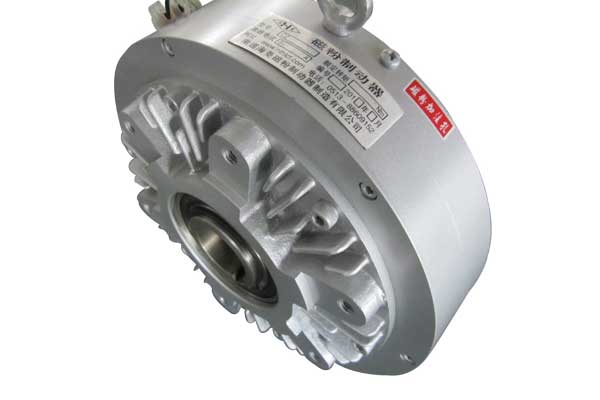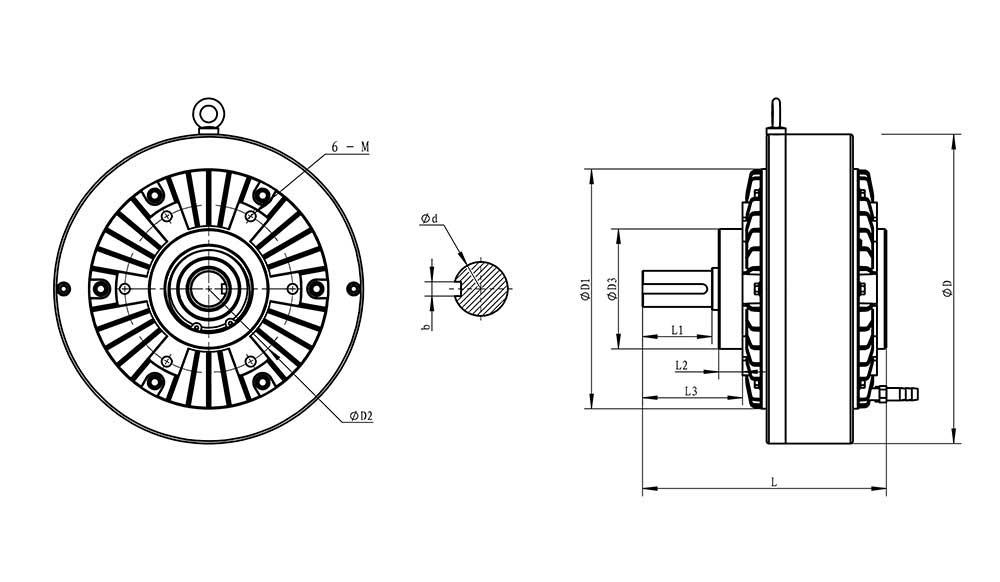A magnetic particle brake is a type of electromagnetic brake that uses magnetic powder to transmit torque between a rotating and stationary member. When an electrical current is applied to the brake coil, a magnetic field is generated that creates friction between the magnetic powder particles. This friction resists the rotation of the brake rotor, and generates a braking torque that can be controlled by varying the amount of current applied to the coil.
Two basic construction of a magnetic particle brake
The basic construction of a magnetic particle brake consists of two main parts: the stator and the rotor. The stator is a stationary member that houses the brake coil and provides a magnetic field. The rotor is a rotating member that is attached to the shaft of the machine or equipment that needs to be controlled. The rotor is coated with magnetic powder, which acts as the friction material.

Works principle
When the brake is engaged, a current is passed through the brake coil, creating a magnetic field that attracts the magnetic particles in the rotor. This creates a resistive force that opposes the rotation of the rotor and generates a braking torque. The strength of the magnetic field, and therefore the braking torque, can be controlled by varying the amount of current flowing through the coil.
The amount of braking torque generated by a magnetic particle brake is directly proportional to the amount of magnetic powder in the rotor. The more magnetic powder that is present, the greater the resistive force and the higher the braking torque. However, increasing the amount of magnetic powder also increases the inertia of the rotor, which can affect the response time and dynamic performance of the brake.
Two key pros of a magnetic particle brake
- One of the key advantages of a magnetic particle brake is its ability to provide smooth and consistent braking torque over a wide range of speeds. Unlike other types of brakes that rely on frictional contact between two surfaces, a magnetic particle brake uses magnetic fields to generate a resistive force that is not affected by changes in speed or temperature.
- Another advantage of magnetic particle brakes is their ability to provide precise control over the amount of braking torque. By varying the amount of current applied to the brake coil, the braking torque can be adjusted to match the specific requirements of the application. This makes magnetic particle brakes ideal for use in applications where precise control over torque is critical, such as in printing presses, wire and cable machines, and paper mills.
Some applications
Magnetic powder brakes are also capable of handling high torque loads while maintaining a small footprint. This makes them ideal for use in applications where space is limited, such as in medical devices, robotics, and automation equipment.
Two cons
However, there are some limitations to the use of magnetic powder brakes. One of the main limitations is their sensitivity to temperature. Magnetic powder brakes rely on the magnetic properties of the powder to generate friction, and high temperatures can cause the magnetic particles to lose their magnetization. This can result in a loss of braking torque and reduced performance.
Another limitation of magnetic powder brakes is their sensitivity to vibration and shock. Excessive vibration or shock can cause the magnetic powder particles to separate, reducing the amount of friction and braking torque generated by the brake.
Summary
A magnetic particle brake is a type of electromagnetic brake that uses magnetic powder to generate a resistive force that opposes the rotation of a rotor. By varying the amount of current applied to the brake coil, the braking torque can be adjusted to match the specific requirements of the application. Magnetic particle brakes are ideal for use in applications where precise control over torque is critical, and where space is limited. However, they are sensitive to temperature, vibration, and shock, and care must be taken to ensure that they are used within their operating limits.
